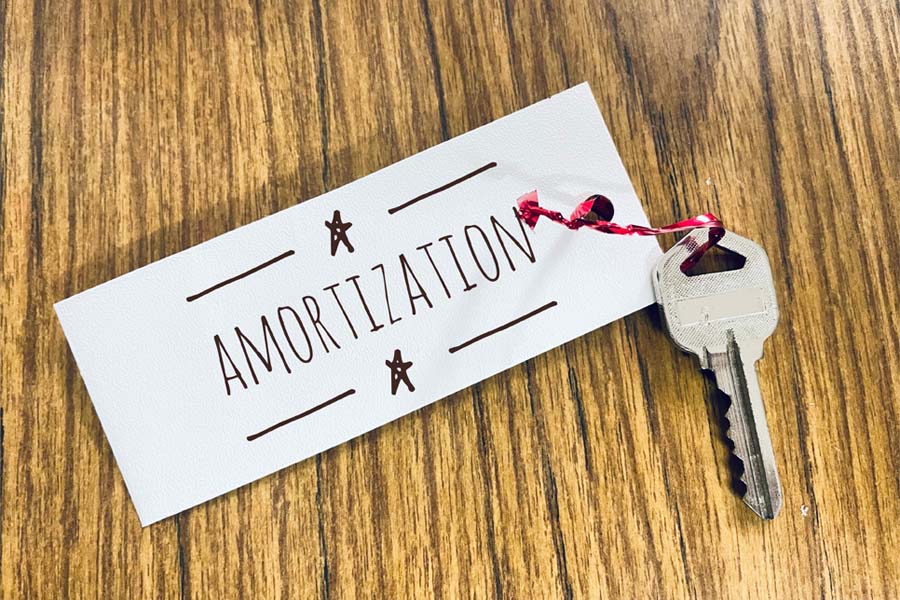Amortization allocates the cost of intangible assets or certain prepaid expenses over multiple years, while depreciation allocates the cost of tangible assets with physical substance over their estimated useful life. Essentially, they are similar concepts in that they both involve the gradual allocation of the cost of assets over time. They help businesses reflect the cost of assets on their financial statements accurately and avoid showing a large expense upfront, which can distort profitability.
Amortization | Depreciation | |
|---|---|---|
Nature of Assets | Intangible (nonphysical) | Tangible (Physical) |
Basis of Allocation | Allocated based on estimated useful life | Spread out over the useful life, considering wear and tear, decay, or obsolescence |
Purpose | Spreads cost over useful life | Spreads cost over useful life, which might mirror wear and tear |
Methods | Often straight-line method | More varied, such as double-declining balance and sum-of-the-years’ digits |
Residual/Salvage Value | Typically has no residual value; entire cost is usually amortized | Takes into account the salvage value of the asset; calculated on the cost of the asset minus its estimated salvage value |
Common Examples of Items | Patents, copyrights, trademarks, and software programs and licenses | Vehicles, machinery and equipment, office furniture, computers, and buildings |
Examples of Amortization vs Depreciation
Amortization
Let’s say a company spends $20,000 to develop a new software program that it expects to be commercially viable for five years. This program is considered an intangible asset. Since it has a limited useful life, the company can’t just expense the entire $20,000 in the year it was developed—this wouldn’t accurately reflect the software’s impact on the company’s finances over time.
Instead, the company will amortize the cost of the program over its five-year useful life. This means that it will record an expense of $4,000 per year (spreading the $20,000 cost evenly over five years) on its income statement. This $4,000 expense is called amortization expense.
By amortizing the program, the company spreads the cost out over the period it benefits from the asset, thus matching the cost of the software with the revenue that it will generate.
Depreciation
Say a company purchases machinery for its manufacturing operations. The machinery costs $100,000 and is expected to have a useful life of 10 years, with no salvage value at the end of its life.
Using straight-line depreciation, which is discussed in detail in our straight-line depreciation guide, the company would allocate the cost of machinery evenly over its useful life. The formula is:
Depreciation Expense per Year | = | Cost of Machinery – Salvage Value |
Useful Life |
In this case, the calculation would be:
Depreciation Expense per Year = ($100,000 – $0) ÷ 10 years
= $10,000 per year
So, each year, the company would record a depreciation expense of $10,000 for the machinery on its income statement. This expense represents the portion of the machinery’s cost that is being “used up” or consumed each year in the manufacturing process.
Over the 10-year period, the accumulated depreciation would total $100,000. This would match the original cost of the machinery, effectively reducing its book value to zero by the end of its useful life.
Common Use Cases of Amortization vs Depreciation
Balance Sheet Impact of Amortization vs Depreciation
While both amortization and depreciation involve the allocation of the cost of assets over time, they differ in terms of the types of assets they apply to and the specific accounting treatment. Following is a comparison of how they each impact a company’s balance sheet.
Amortization
The balance sheet impact of amortization depends on the type of asset being amortized. Amortization typically applies to intangible assets or certain prepaid expenses. Here’s how it affects the balance sheet:
- Intangible assets: When an intangible asset is amortized, its value decreases over time on the balance sheet. This decrease is reflected in the asset’s carrying value, reducing it gradually until the asset is fully amortized. The corresponding entry is a debit to Amortization Expense (an income statement account) and a credit to Accumulated Amortization (a contra-asset account, deducted from intangible asset’s original cost).
- Prepaid expenses: Prepaid expenses, such as prepaid rent or insurance premiums, are initially recorded as assets on the balance sheet because they represent future economic benefits. As these benefits are consumed or utilized, the prepaid expense is gradually recognized as an expense on the income statement through amortization. The balance sheet impact of amortization in this case is a reduction in the prepaid expense asset and a corresponding increase in the related expense on the income statement.
In both cases, the net impact of amortization on the balance is a decrease in the carrying value of the asset being amortized. This reduction reflects the allocation of the asset’s cost over its useful life to match the expense with the periods in which it provides benefits. Accumulated amortization serves to show the total amount of amortization expense recognized since the asset was acquired, providing transparency about the asset’s remaining value.
Depreciation
Depreciation primarily impacts the balance sheet through its effect on the carrying value of tangible assets. Here’s how depreciation affects the balance sheet:
- Tangible assets: Buildings, machinery, equipment, vehicles, and other intangible assets are initially recorded on the balance sheet at their cost. As these assets are used over time, they lose value due to wear and tear, obsolescence, or other factors. Depreciation is the accounting method used to allocate the cost of these assets over their estimated useful lives.
- Each accounting period a portion of the asset’s cost is recognized as depreciation expense on the income statement.
- Simultaneously, the accumulated depreciation account on the balance sheet increases by the same amount. Accumulated depreciation is a contra-asset account, which reduces the carrying value of the asset.
- The carrying value of the asset on the balance is calculated as its historical cost minus accumulated depreciation. This reflects the portion of the asset’s original cost that has been allocated as an expense over time.
- Net book value: Also known as net carrying amount or net carrying value, the net book value of tangible assets on the balance sheet is the difference between the asset’s historical cost and its accumulated depreciation. This represents the remaining value of the asset that has not yet been allocated as an expense through depreciation.
- Impact on equity: The reduction in the carrying value of assets due to depreciation directly affects equity on the balance sheet. Since equity is equal to assets minus liabilities, a decrease in asset value (due to accumulated depreciation) results in a corresponding decrease in equity.
In summary, depreciation reduces the carrying value of tangible assets on the balance sheet by recognizing a portion of their cost as an expense over time. This ensures that the asset’s value is appropriately matched with the revenue it helps generate and provides a more accurate representation of the asset’s remaining value.
Amortization and depreciation are both integral parts of fixed asset accounting and are usually performed by experienced bookkeepers. If you want to learn more, check out our fixed asset accounting guide, where we also discuss many aspects of depreciation. Also, you may want to check out our guide on what bookkeeping is what a bookkeeper does.
Frequently Asked Questions (FAQs)
The difference between depreciation vs amortization is that depreciation allocates the cost of tangible assets, while amortization focuses on intangible assets and their useful life. Both are accounting methods that allocate the cost of an asset over its expected useful life.
Amortization is specifically used for intangible assets—or assets that are nonphysical but hold value for a business. Common types of assets that undergo amortization include intellectual property, licenses, goodwill, mailing lists, and customer relationships.
The main objectives of both are to match the cost of purchasing assets with the revenues they generate over multiple years and to provide a more accurate representation of a company’s financial position and performance over time.
No, amortization is a noncash expense, meaning it doesn’t involve a direct cash outflow.
Bottom Line
The difference between depreciation vs amortization is that depreciation applies to tangible assets and represents the allocation of their cost over time due to physical wear and tear, whereas amortization applies to intangible assets and represents the allocation of their cost over time due to their useful life. Both practices help match expenses with the revenues generated by the use of these assets, providing a more accurate representation of a company’s financial performance.


